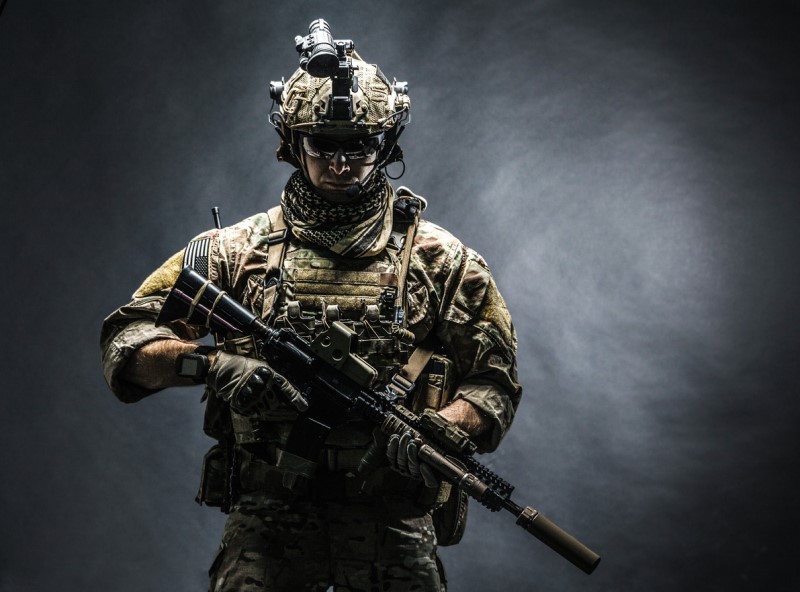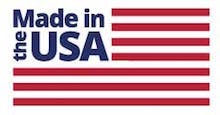On average, defense accounts for roughly half of the federal government’s discretionary spending. Clearly, this is an enormous portion of the budget, but to put this into perspective, last year the government spent 1.8% on agriculture, and 3.5% on energy and water. While it is difficult to put an exact percentage on how much of defense spending goes towards textiles – military textile products and components cover a broad range of categories, including uniforms, bedding and temporary structures (tents and tarps), personal protection equipment, and lifting/logistics equipment (slings, tie-downs, and cargo letting), and others – it is certainly a significant and vital consideration for military procurement.
In a joint report by the US Industrial Fabrics Institute and the Narrow Fabrics Institute, it was estimated that more than 8,000 separate textile products were purchased by the military in 2019, and when accounting for size variation, that number surpasses 30,000 separate items.
Military Personal Protection Equipment
An important category in which military textiles play a pivotal role is personal protection equipment, or PPE. Body armor, eye protection, tactical vests, advanced combat helmets, breathing devices, gloves, and footwear are examples of military PPE worn by soldiers during battle or training. PPE is designed to protect soldiers from biological, chemical, physical, and radioactive threats. The rising focus of defense agencies on troop safety and security, as well as higher military budgets, are expected to fuel market growth over the forecasted period through the year 2028. Despite the COVID-19 pandemic, global military spending has increased significantly as compared to 2019. This can be attributed to the growing geopolitical instability, internal conflicts, border disputes, rising terrorism, and increased spending on NATO initiatives. Thus, increased military spending is likely to boost product demand in the coming years.
Currently, the body armor product segment accounts for the largest share of textile-based defense expenditures at 19.8% of the global market in 2020. This, largely because of the increased demand for ballistic protection equipment needed in numerous new and ongoing conflicts. The demand for PPE for eyes is estimated to experience growth of 7.5% by the year 2028. Eyewear – featuring textile elastics and straps – offers not only protection from potential combat-related injuries, but also visibility enhancement, and UV reduction. Additional advanced features continue to be developed and tested to provide war fighters with ever more advantages on the battlefield.
Combat helmets are an essential aspect of soldier PPE. Combat helmets that protect personnel from many ballistic battlefield threats are being redesigned for both comfort and protective performance. The narrow fabrics incorporated include webbing and elastics that must meet a variety of standards relative to flammability, UV, abrasion, and mold resistance, etc. The respiratory protection segment is estimated to register the fastest growth due to demand relative to the increasing threat of chemical, biological, and radiological warfare across the globe. There are numerous narrow fabrics – including webbing, elastics, tubes, etc. – that are used as components for RPE (respiratory protective equipment).
Military Textiles for Uniforms
While natural fibers, such as cotton and wool, had long accounted for the majority of military textiles, and are still widely used – primarily for clothing – a broad range of man-made fibers/materials are increasingly being chosen for their various performance capabilities.
Performance goals for uniforms will – as one might imagine – vary greatly, depending on a number of factors. First, there are 3 main categories for military uniforms:
- Combat or “working” uniforms are more informal and easier to move in. They are most often made up of a tunic – a heavy-duty jacket – pants, t-shirt, a cover (hat) and boots. Combat uniforms are traditionally patterned in green or tan camouflage. Service members do wear this type of uniform in combat, but it is also common for them to wear it while performing day-to-day duties in non-combat settings. Insignia – symbols identifying a service member’s rank – are present, but subdued, on combat uniforms.
- Service uniforms are “everyday” uniforms. Green, white, blue, or khaki, these uniforms include a button-up shirt, slacks or skirt, dress shoes and cover. Service uniforms are similar to business dress – intended for office environments and for service members interacting with the public. Insignia are prominently displayed on service uniforms.
- Dress uniforms are more formal and can be elaborate. These uniforms include a formal jacket or jumper, slacks or skirt, a cover and dress shoes. Dress or “mess” uniforms may be white, blue, green, or black. In some branches, there are different types of dress depending on the formality of the event. Insignia are prominently displayed on dress uniforms, as are awards, decorations, and medals.
Particularly for combat uniforms, the material, performance, and construction can change dramatically relative to the service branch, location, and specific job of the service member. The uniform demands of a naval pilot will certainly be different from that of an infantry soldier stationed in the Middle East, and their uniforms will be carefully engineered to address those needs.
Defense Supply Chain Logistics
In the area of supply chain logistics, narrow fabrics play a crucial role in moving, storing, and securing the military. Whether for lift slings used by cranes, helicopters, and winches, or tie-downs and cargo netting, needed to secure all manner of supplies and equipment, high-performing webbing is a necessary component throughout all militaries around the globe.
Made in the USA
In the US, the pentagon and Congress support our domestic defense suppliers (military textiles and others) through the creation and enforcement of the Berry Amendment. Originally passed by Congress in 1941 it was implemented in order to promote the purchase of certain U.S. goods. The Amendment was included in subsequent defense appropriations act until it was made permanent in Fiscal Year 1994 by section 8005 of Public Law 103-139, and on October 17, 2006, the President signed the National Defense Authorization Act for Fiscal Year 2007 (Public Law 109-364).
OTEX Specialty Narrow Fabrics is one of those Made in the USA manufacturers that is proud to have produced high performance textile for the military for many decades. Using US-made fibers – like Kevlar, Nomex, Spectra, and others – we design and manufacture the highest quality webbing, elastics, trims, tapes, tubes, and smart fabrics, as components for all branches of the service.
No other manufacturer is more experienced, or more renowned for designing and manufacturing specialty narrow textiles from high-performance fibers than OTEX Specialty Narrow Fabrics. Our team of designers, engineers, and technicians never stop exploring new materials and techniques to push performance ever further to ensure safety. If you and/or your associates are looking to source a narrow textile product with demanding physical properties, we invite you to contact us to discuss the unique challenges of your project/program. Our Sales, R&D, and Quality Assurance staff are happy to help you find exactly the right design for your needs. If it is not an existing product from our extensive catalogue, rest assured, nothing makes us more excited than engineering new custom textile solutions.



